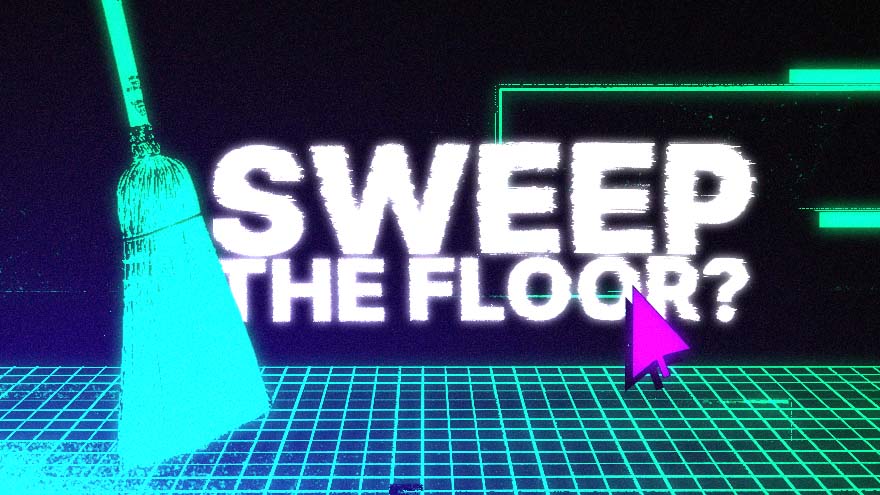Get the 5-minute newsletter keeping 73K+ crypto innovators in the loop.
© Defiant Media Inc 2022
Advertisement
Understanding a Key Investing Practice in Nonfungible Tokens
By: Rahul Nambiampurath
As speculative assets go, NFTs are at the riskier end of the spectrum. And they’ve fetched astonishing sums in the marketplace. From Yuga Labs’ Bored Ape Yacht Club to Chiru Labs’ Azuki, a dozen NFT collections recorded $400M in total sales. Even after May’s market crash in 2022, the floor price of top collections remained at around 70 ETH.
New traders are searching for the next hit collection. This is where the “sweep the floor” NFT trading strategy comes into play.
The floor price is the fundamental metric in the NFT market. The NFT market behaves much like the commodities market, with one big difference: the former is decentralized. The price determination in the NFT market is organic. As the project gains public traction, more people rush to buy items from an NFT collection, typically composed of 10,000 NFTs. And the more they buy, the more the minimum price rises.
That is the NFT floor price; the minimum available price one is willing to sell an NFT. Considering that NFT marketplaces operate 24/7, this means that a floor price for a particular project can rapidly ramp up.
Although these floor spikes do not happen often, they are easily triggered by a celebrity adoption or partnership announcement. If we take a look at Meebits floor price on March 12 the floor price jumped by 45%, to 6.1 ETH.
Why did the spike happen on that day? Because Yuga Labs, creator of the super-popular Bored Ape Yacht Club, announced that it acquired both CryptoPunks and Meebits, both of which were owned by Larva Labs. This would be equivalent to Nike announcing they have bought Adidas. The valuations of all the collections were bound to soar.
Trading volume shows the level of interest in the NFT collection. Like floor price, trading volume is spurred by various social media/collab happenings. For example, when SnoopDogg and Eminem partnered to create a BAYC-themed music video, they spurred market interest and speculation, which affects trading volume.
If the volume is high, it indicates high liquidity. In turn, this indicates there are more potential traders willing to buy or sell NFTs at certain price levels.
The NFT market is all about picking the next blue-chip NFT when before it is one. Let us remember that the BAYC floor price was 15 ETH on Aug.18, 2021. On Aug. 7 it was 81.8 ETH.
This means prescient BAYC buyers could have sold their NFTs a year later for a 445% profit. Not bad for a speculative asset. Such performances generate a lot of FOMO in the market — fear of missing out. So collectors are constantly searching for the next hit. That’s where the sweeping-the-floor trading strategy comes in.
Buyers don’t need to just buy NFTs one at a time — they can buy all listed NFTs at its floor price. They can sweep the floor. For that to happen, the buyer would have to closely track the project before it is minted and released for public trading.
This is the purpose of NFT calendars that track upcoming mints. Additionally, NFT publishers tease their projects on social media, usually Twitter and Discord, to rally the FOMO troops.
One of the recent upstarts in this FOMO arena was Goblintown. Without a doubt, Goblintown was one of the few generative 10,000 NFT collections that looks as if each NFT was individually handcrafted.
Likewise, the goblintown.wtf website itself was created with both technical and artistic competence. This combo caused quite a buzz it could be another BAYC in the making. And that’s exactly what transpired, for a time. Between May 25 and June 2, Goblintown’s floor price skyrocketed 1,189%.
In such instances, when the blue-chip FOMO is clearer than usual, floor sweepers deploy searcher bots buy all available NFTs.
With a successful sweep-the-floor strategy, NFT traders can flip them into juicy profits, But there is enormous risk: If a trader sweeps the floor and then can’t sell the NFTs they are left holding the bag with potentially worthless digital assets.
In addition to gaining massive flipping potential, NFT floor sweepers are able to save on gas fees. When transactions are bundled, they are counted as single ones. Likewise, bulk-buying NFTs by sweeping the floor can save up to 40% on gas fees.
However, this only applies if one is using specialized aggregator services like gem.xyz. For regular floor sweepers who trade manually, the opposite happens. Because multiple transactions have to be executed, they ramp up gas costs.
Equally, the manual approach slows down transactions, so a trader would be in a race with others who have the same idea. For this reason, NFT floor sweepers tend to use automated sniper bots seeking NFT collections in pre-mint states. Each bot would have to be adopted for a specific blockchain network, such as this floor price bot for Solana.
NFT floor sweepers are nothing more than classic concert ticket scalpers. Applied to the realm of digital assets, they use more sophisticated tools instead of just standing at the street corner. Nonetheless, given the stiff competition and the potential gains from finding the next blue-chip NFT, all means are allowed in NFT trading wars.
Series Disclaimer:
This series article is intended for general guidance and information purposes only for beginners participating in cryptocurrencies and DeFi. The contents of this article are not to be construed as legal, business, investment, or tax advice. You should consult with your advisors for all legal, business, investment, and tax implications and advice. The Defiant is not responsible for any lost funds. Please use your best judgment and practice due diligence before interacting with smart contracts.
Robin Schmidt•
Owen Fernau•
Owen Fernau•
Robin Schmidt•
Aleksandar Gilbert•
Advertisement
Author
Administraroot


